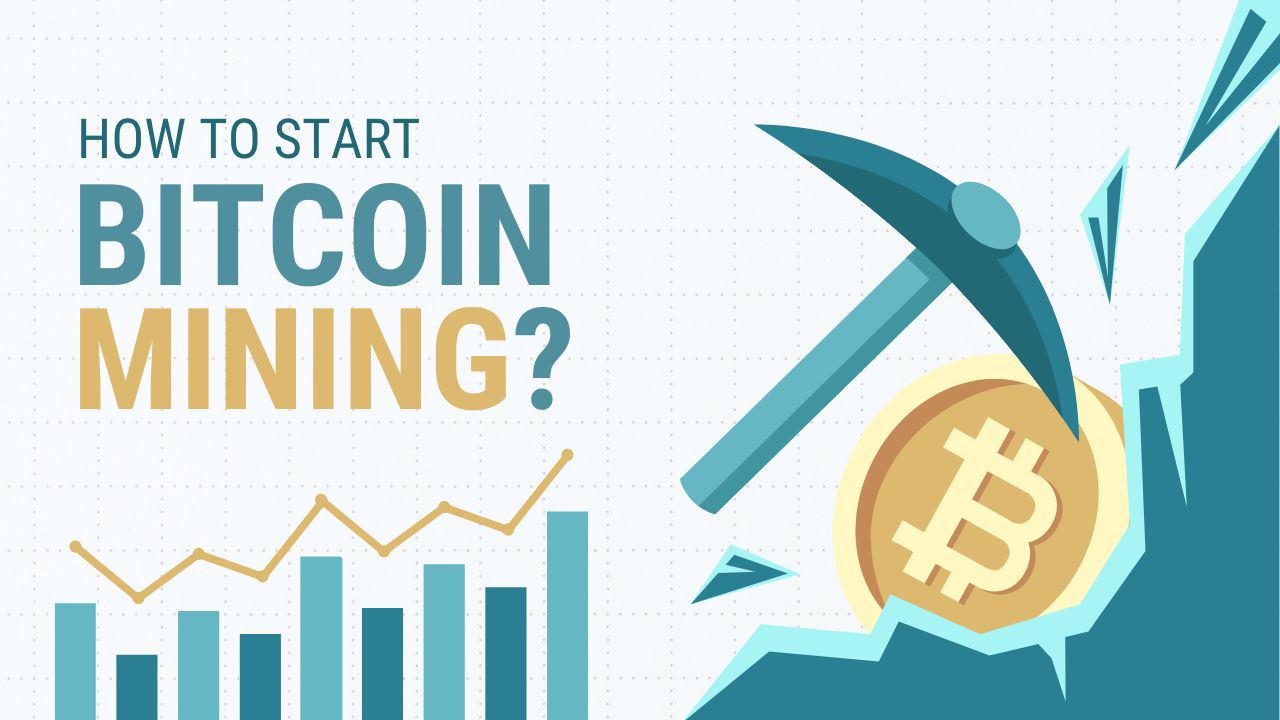Start Bitcoin mining, the process of validating transactions and earning rewards in the form of Bitcoins, can be an exciting venture for those seeking cryptocurrency involvement. While it may seem complex, with the proper guidance, starting your Bitcoin mining journey can be both accessible and rewarding. This comprehensive guide will walk you through the steps to begin your Bitcoin mining adventure.
Table of Contents
Step 1: Educate Yourself
Start Bitcoin mining, Before diving into Bitcoin mining, it’s crucial to understand the basics. Research and gather knowledge about how mining works, the role of miners, and the technology behind it. Familiarize yourself with terms like blockchain, hash rate, and proof-of-work.
Step 2: Choose Your Mining Equipment
- Select Your Hardware: Choose between ASIC (Application-Specific Integrated Circuit) miners or GPU (Graphics Processing Unit) miners. ASIC miners are more efficient for Bitcoin mining due to their specialized design, while GPU miners offer versatility for mining different cryptocurrencies.
- Consider Power Consumption: Factor in the energy consumption of your chosen hardware. Mining can be power-intensive, so opt for energy-efficient equipment to maximize your profits.
- CPU Mining: Ideal for beginners but less efficient.
- GPU Mining: Uses graphics cards. Mid-range efficiency.
- ASIC Mining: Highly specialized equipment with high output but can be expensive.
Step 3: Set Up a Wallet
- Choose a Wallet: Select a secure Bitcoin wallet to store your earned Bitcoins. There are various options, including hardware, software, and online wallets.
- Hardware Wallets like Trezor or Ledger.
- Software Wallets such as Exodus or Electrum.
- Obtain Your Wallet Address: Generate a wallet address, which you’ll use to receive your mining rewards. Make sure to keep this address safe and accessible.
Step 4: Install Mining Software
- Pick the Right Software: Choose a mining software compatible with your hardware. Popular options include CGMiner, BFGMiner, and EasyMiner.
- CGMiner: Versatile and compatible with most hardware.
- BFGMiner: ASIC-focused software.
- EasyMiner: User-friendly for beginners, compatible with Windows.
- Configure the Software: Follow the instructions to configure your mining hardware. Input your wallet address and pool information (if applicable).
Step 5: Join a Mining Pool
- Pool Selection: Joining a mining pool allows you to combine your mining power with other miners, increasing your chances of earning rewards. Research and select a reputable mining pool with fair reward distribution.
- Create an Account: Sign up for an account on the chosen mining pool’s website. Enter your wallet address and configure your mining software to connect to the pool.
- Some popular Mining Pools include:
- Slush Pool
- F2Pool
- BTC.com Pool
Step 6: Start Mining
- Monitor Your Setup: Once your mining software is configured and connected to the pool, monitor your mining operation’s performance. Keep an eye on your hash rate and temperature to ensure optimal efficiency.
- Track Your Earnings: Most mining pools provide real-time data on your earnings. Monitor your accumulated rewards and track your progress.
Step 7: Stay Informed and Adapt
- Stay Updated: Stay informed about the latest developments in the cryptocurrency and mining space. Join forums, follow news sources, and engage with the community to enhance your knowledge.
- Adapt to Changes: The cryptocurrency landscape is dynamic. Be prepared to adapt to technological changes, regulations, and market conditions.
Also Read this Blog: How Does Bitcoin Work? A Beginner’s Guide to Bitcoin

Conclusion: Start Bitcoin Mining
Starting your Bitcoin mining journey is an exciting endeavour that requires careful planning and continuous learning. Following this step-by-step guide, you’ll be well-equipped to set up your mining operation, join a pool, and earn Bitcoins. Remember, patience and persistence are key as you navigate the ever-evolving world of cryptocurrency mining.





 Bitcoin
Bitcoin  Ethereum
Ethereum  XRP
XRP  Tether
Tether  USDC
USDC  Lido Staked Ether
Lido Staked Ether